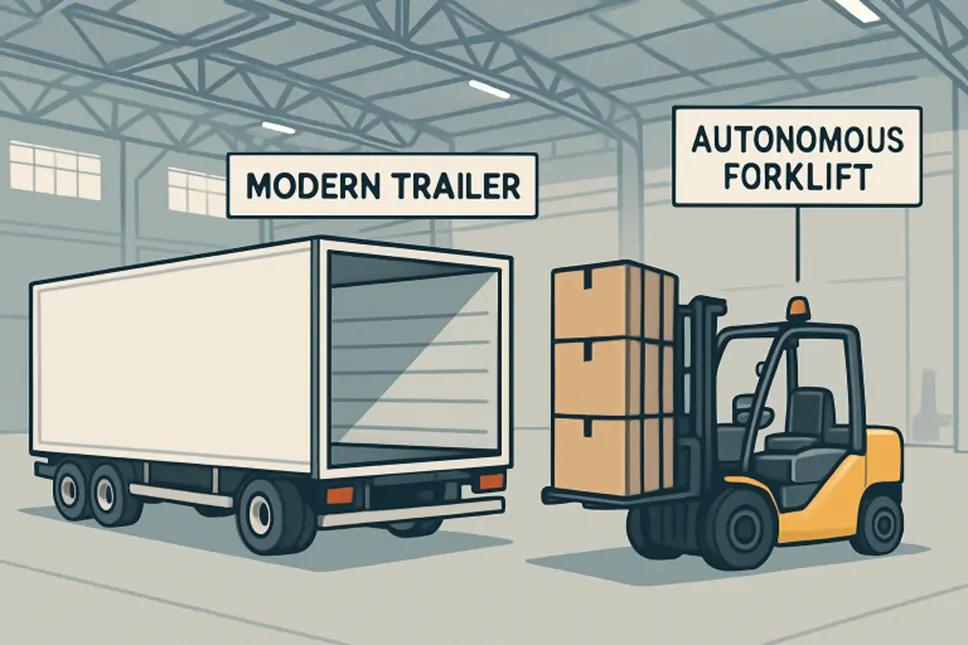In today’s rapidly evolving logistics landscape, businesses are under increasing pressure to prioritize both efficiency and worker safety. Next-generation trailer solutions—from autonomous loading technology to digitally integrated telematics—are redefining the standards for material transport and storage. Companies in various sectors now rely on advanced material handling trailer solutions that provide reliability, speed, and superior safety for their everyday operations.
The latest technological advancements are not merely responding to industry demands; they are shaping how entire supply chains function. Seamless integration of lightweight materials, automation, and connected systems is opening the door to greater productivity while minimizing operational risks. As global supply chains grow more complex, the need for flexible and innovative trailer designs has never been more apparent.
Automation, in particular, stands at the forefront of this revolution. Innovators are combining cutting-edge control systems with autonomous vehicles to automate previously manual and repetitive tasks. The result is a measurable improvement in turnaround times, lower workplace injury rates, and optimized labor utilization—and the benefits extend well beyond traditional warehousing, reaching the construction, retail, and manufacturing sectors.
One of the most notable trends is the movement toward technology-driven sustainability. As climate consciousness rises, manufacturers are producing lighter, more fuel-efficient trailers that can reduce environmental impact and lower costs across entire fleets.
Autonomous Loading and Unloading Systems
A major leap in material handling efficiency has been realized through the adoption of autonomous loading and unloading systems. Recent product launches, such as the VNST20 PRO autonomous forklift, have set new industry benchmarks. This advanced system demonstrates the capacity to manage an entire loading or unloading cycle for a standard trailer truck in just 45 minutes, thereby reducing the need for manual intervention and eliminating operational bottlenecks. Such solutions are expected to become the backbone of smart distribution centers, creating better allocation of human resources and faster response to market demand fluctuations.
Lightweight Trailer Construction
Modern trailer construction increasingly focuses on reducing weight without compromising structural integrity. Notable collaborations between leading manufacturers have yielded trailers with unladen weights as low as 4.8 tonnes. These lightweight builds are particularly beneficial for the beverage, automotive, and chemical industries, enabling businesses to increase payloads while reducing fuel consumption. The resulting decrease in carbon emissions also aligns with growing sustainability initiatives across global supply chains.
Digital Integration and Telematics
The digital transformation of material handling trailers continues to accelerate as fleets are equipped with advanced telematics and real-time monitoring systems. Digital integration allows for constant access to trailer location, vehicle health, and fuel consumption statistics. This shift has enabled a paradigm where proactive maintenance and sophisticated routing software reduce downtime, improve service levels, and lower long-term ownership costs. The trend toward “smart trailers” reflects a broader shift toward maximizing data-driven decision-making at every stage of the supply chain.
Enhanced Safety Features
Ensuring the safety of workers and assets remains a top priority for every logistics provider. Innovations like the Ground-Mounted Trailer Support (GMTS) exemplify how engineering can mitigate workplace hazards. The GMTS delivers hands-free trailer support with remote activation, allowing operators to remain safely inside the dock area, away from loading zone traffic and risk of exposure. These protective features not only adhere to stricter regulations but also reinforce a safety-first culture, further reducing compensation claims and improving on-site morale.
Versatile Tugger Trailers
The need for flexibility in material transport has driven the development of tugger trailers compatible with diverse towing solutions. These versatile trailers can be used in both indoor warehouses and outdoor yards, allowing seamless transfer of goods across varied distances and environments. This makes them ideally suited for assembly lines, cross-docking operations, and shifts between production and storage facilities. Their adaptability is especially valuable in automotive and mechanical engineering industries, where material flows are dynamic and manufacturing layouts often change.
Heavy-Duty Self-Propelled Trailers
For specialized applications like construction and heavy manufacturing, heavy-duty self-propelled trailers have become indispensable. Capable of transporting loads exceeding 50 tons, these self-powered units deliver unmatched precision and maneuverability—even in tight, challenging spaces. They eliminate the need for additional tractors, reducing both floor traffic congestion and dependency on coordinated vehicle fleets. This innovation marks a fundamental shift toward solutions that offer independence, efficiency, and enhanced control over critical logistics tasks.
Conclusion
As material handling needs evolve, innovative trailer solutions play a central role in driving transformation across the logistics industry. Advancements in automation, lightweight constructions, and digital integrations are more than technological trends—they represent new standards for efficiency, safety, and environmental responsibility. With continued development, the next generation of trailers will further streamline operations, enabling organizations to thrive in the competitive global market.

